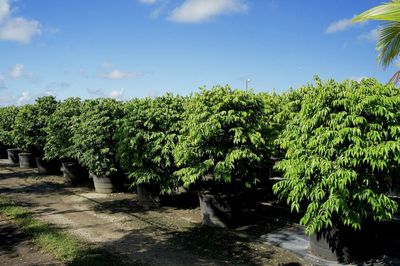False Jabotica Information
Blue grape (Myrciaria vexator) is not a true grape in the family Vitaceae but is, instead, a member of the Myrtle genus. Blue grape plants are native to the tropical Americas where they are found at the edges of forests and in pastures along roads. They are also called false jaboticaba because the flavor of the fruit is also similar to that from jaboticaba trees. If you reside in a warm region, try growing false jaboticaba as both a source of delicious fruit and as an elegant tree. The tree grows wild in places like Venezuela, Costa Rica, and Panama. It is an evergreen tree that grows 10 to 15 feet (3-5 m.) tall with an attractive shape. The bark tends to peel and reveal a lighter interior bark. False jabotica develops multiple trunks. The leaves are lance-shaped, bright green, and glossy. Flowers appear in clusters and are snowy white with showy, prominent stamen. The blue grape fruits are 1 to 1.5 inches (2.5-4 cm.), edible, and grow directly on the branch. They have a fruity aroma and pulp and a pit much like a grape.
How to Grow Blue Grape
Blue grape growing is suitable for United States Department of Agriculture zones 10 to 11. The plants have absolutely no frost tolerance but do tolerate a variety of soil types. Plant the tree in full sun where soil is well-draining. Young plants need regular irrigation to establish them but are unbothered by periods of drought once mature. If you get hold of some fruit, the tree can be propagated by seed, but it will take up to 10 years to see fruit. False jabotica information indicates the tree can also be propagated through cuttings.
Blue Grape Care
The tree is not under orchard cultivation and is just a wild specimen in its native region. Since they grow in warm, coastal regions, it is assumed they need heat, sun, and rain. There are no major pests or diseases listed, but as with any plant grown in warm, humid conditions, occasional fungal disease issues may arise. The skin of the fruit is quite thick and is said to resist penetration by the Caribbean fruit fly. The blue grape is very ornamental and would make an excellent addition to the tropical or exotic garden.
